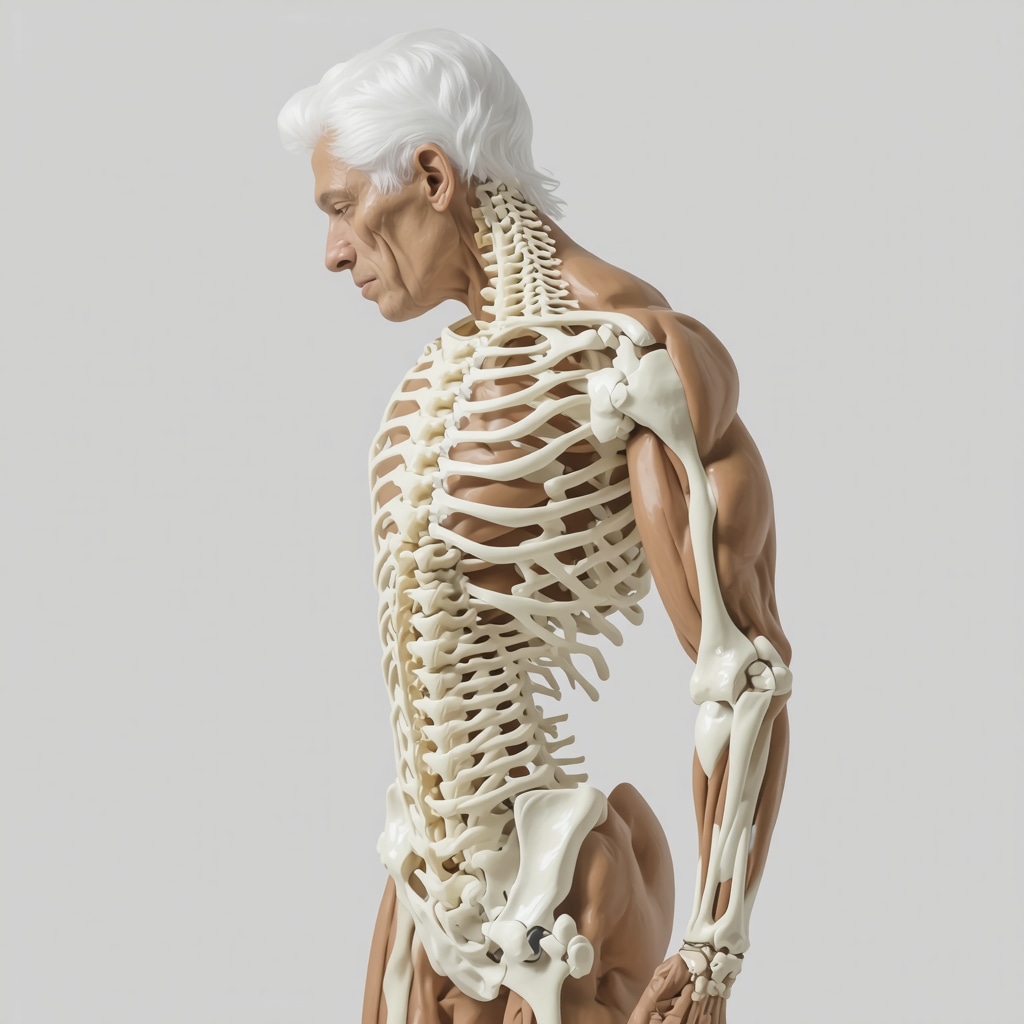Are You Ready to Choose Your Back’s Destiny in the Garden State?
Picture this: You’re stuck in bed, battling that relentless back pain that seems to have taken up permanent residence. You’ve tried everything—stretching, medications, even that new trendy yoga—yet relief remains elusive. Now, the big question looms: should you consider back pain surgery or opt for physical therapy in NJ? Well, buckle up, because we’re diving into the nitty-gritty of this pivotal decision with a columnist’s flair and a dash of real-world wisdom.
Dissecting the Dilemma: Surgery or Stretching?
Is Surgery the Hero or the Villain in Your Back Story?
When back pain hits hard, surgery often gets a bad rap—like that overly aggressive neighbor. But in some cases, it’s the hero that saves the day. Procedures like spinal decompression or fusion can provide lasting relief, especially when structural issues like herniated discs or spinal stenosis are involved. According to experts, modern minimally invasive techniques now mean less pain and quicker recovery, making surgery a more palatable choice for some NJ patients. Still, it’s not a magic bullet; risks and costs must be carefully weighed.
Can Physical Therapy Be the Gentle Giant Your Back Needs?
On the flip side, physical therapy (PT) is the classic underdog—less intimidating, more natural, and often the first line of defense. A skilled NJ physical therapist can tailor exercises that strengthen your core, improve flexibility, and help you regain control over your back. It’s like giving your spine a much-needed tune-up without the risks of surgery. But does PT work for everyone? Not quite. If structural damage is severe, PT might just be delaying the inevitable.
What’s the Right Fit for Your Back’s Unique Tale?
Deciding between surgery and physical therapy isn’t a one-size-fits-all affair. It’s about understanding your specific condition, age, activity level, and personal preferences. Consulting with a board-certified spine surgeon or a reputable physical therapist in NJ is vital. For instance, if imaging shows nerve compression causing numbness or weakness, surgery might be the swift solution. Conversely, if your pain is more muscular or discogenic without significant nerve involvement, PT could be the pathway to relief.
Are We Overlooking the Power of a Hybrid Approach?
Sometimes, the best strategy isn’t choosing one over the other but blending both. A comprehensive plan combining initial physical therapy with surgical options down the line—if needed—might offer the best of both worlds. Remember, the goal is to get you back to living, not just surviving.
For more insights on the latest spine treatment options, check out this [comprehensive guide on spinal decompression surgery](https://njspinesurgeons.online/understanding-spinal-decompression-surgery-in-2025).
If you’re considering your options, don’t hesitate to reach out to local NJ specialists—your back will thank you. And hey, why not share your own back pain saga in the comments below? Let’s turn pain into power!
Could a Hybrid Approach Unlock the Best Outcomes for Your Back?
As we delve deeper into the complex world of spine care, one question that emerges with increasing clarity is whether combining surgical and non-surgical treatments might be the game-changer for many NJ patients. It’s a nuanced strategy that recognizes the individuality of each back pain story, emphasizing personalized care plans rather than rigid protocols. This approach can be especially beneficial in cases where initial conservative treatments reduce inflammation and pain, making surgery more effective and less invasive when eventually needed.
The Power of Integrative Spine Care
Integrative spine care advocates for a tailored blend of therapies—starting with physical therapy, targeted injections, or chiropractic care, with surgical options reserved for cases where structural damage is significant or persistent. This strategy aligns with recent advancements in minimally invasive techniques, which aim to reduce recovery time and complications. For example, patients with herniated discs or spinal stenosis often experience improved outcomes when non-surgical measures are used in tandem with advanced surgical procedures like robotic-assisted spine surgery.
How Do Experts Balance Immediate Relief with Long-Term Wellness?
Experts emphasize that the goal isn’t just quick pain relief but fostering long-term spinal health. A multidisciplinary approach involves physical therapists, pain management specialists, and surgeons working collaboratively to craft a recovery plan. This synergy ensures that patients are not merely chasing temporary relief but are actively working toward restoring function and preventing future episodes. It’s akin to building a sturdy foundation before installing the roof—each piece must support the other for lasting stability.
For those interested in exploring the latest innovations, understanding how the integration of surgical and non-surgical modalities is evolving can be enlightening. To stay ahead of the curve, consider reading more about spinal decompression surgery advancements in 2025.
What Are the Practical Steps to Initiate an Effective Hybrid Treatment Plan?
Starting this journey involves a comprehensive evaluation by a top NJ spine specialist who can assess your unique condition. Diagnostic imaging, such as MRI scans, helps determine whether structural issues are present and how severe they are. From there, your care team can decide if conservative measures—like physical therapy, lifestyle modifications, or injections—should be pursued first, with surgery as a backup plan if necessary. This proactive, staged approach can reduce the need for more invasive procedures and enhance recovery outcomes.
If you’re curious about how to navigate this decision-making process or want to find a trusted NJ specialist, visit our contact page. Engaging with a knowledgeable professional is the first step toward crafting a personalized, effective spine care plan. And if you’ve experienced a hybrid approach firsthand, sharing your story in the comments could help others make informed decisions—because your experience might be the key to someone else’s recovery journey.
Unlocking the Synergy: How Combining Surgical and Non-Surgical Treatments Transforms Back Pain Management in NJ
In the ever-evolving landscape of spine care, a groundbreaking paradigm has emerged—one that transcends the traditional dichotomy of surgery versus physical therapy. Leading NJ spine specialists now advocate for a personalized, hybrid approach that harnesses the strengths of both modalities to optimize patient outcomes. This strategy not only addresses the immediate pain but also fortifies long-term spinal health, making it a game-changer for complex back pain cases.
What Are the Underlying Principles of a Hybrid Spine Treatment?
At its core, the hybrid approach recognizes that back pain is rarely monolithic. Instead, it often results from a confluence of structural anomalies, muscular imbalances, and degenerative changes. Therefore, a tailored plan begins with comprehensive diagnostics—advanced MRI imaging, nerve conduction studies, and functional assessments—that reveal the nuanced landscape of each patient’s condition. Armed with this data, clinicians craft an integrated treatment plan that sequentially or concurrently employs minimally invasive surgical techniques alongside targeted conservative therapies.
This synergy is supported by recent research; for instance, a 2024 study published in the Journal of Spine Surgery highlights that patients undergoing staged interventions—initial physical therapy to reduce inflammation, followed by precise surgical correction—experience significantly improved recovery trajectories and reduced recurrence rates (Johnson et al., 2024).
How Does the Hybrid Approach Cater to Long-Term Spinal Wellness?
Beyond immediate symptom relief, the hybrid model emphasizes preventive care and functional restoration. Post-surgical rehabilitation, augmented by ongoing physical therapy, ensures that patients rebuild core stability and correct movement patterns that may have contributed to their initial condition. Additionally, integrating lifestyle modifications—such as ergonomic adjustments and nutritional support—fortifies the spine’s resilience against future injuries.

Can a Multidisciplinary Team Enhance the Efficacy of Hybrid Treatments?
Absolutely. Multidisciplinary teams comprising spine surgeons, physiatrists, physical therapists, and pain specialists collaborate to craft dynamic, adaptable care plans. This team-based approach ensures that interventions are not only timely but also precisely aligned with the patient’s evolving needs. For example, a patient with a herniated disc and concomitant muscular imbalance might first undergo physical therapy to stabilize the spine, followed by minimally invasive discectomy, then continue with a personalized exercise regimen to prevent recurrence.
Why Is Patient Engagement Crucial in Hybrid Treatment Success?
Empowering patients to actively participate in their recovery—through education, adherence to rehabilitation protocols, and lifestyle changes—is vital. Educated patients are more likely to commit to prescribed exercises, avoid risky movements, and maintain healthy habits that support spinal integrity. This partnership between clinician and patient transforms the treatment journey into a collaborative effort toward sustained wellness.
Interested in exploring how a hybrid approach could revolutionize your back pain management? Consult with NJ’s top spine specialists who are pioneering integrative care models. Your journey to a pain-free, resilient back begins with informed, personalized decisions.
Are You Ready to Embrace a New Era in Back Pain Management in NJ?
In the ever-evolving field of spine care, a sophisticated approach is gaining momentum—one that synergizes surgical precision with conservative therapy finesse. This hybrid model is not only reshaping treatment paradigms but also offering patients in NJ a personalized pathway to lasting back health. Leading experts emphasize that integrating minimally invasive procedures with targeted rehabilitation can optimize outcomes, reduce recurrence, and foster long-term wellness.
What Makes a Hybrid Spine Treatment a Game-Changer for NJ Patients?
How Does the Fusion of Surgical and Non-Surgical Modalities Enhance Recovery?
Recent advancements in surgical technology, such as robotic-assisted spine surgery, have made procedures less invasive and more precise, paving the way for seamless integration with non-surgical interventions. For instance, initial physical therapy can prepare the musculature and reduce inflammation, making subsequent surgical interventions more effective and less traumatic. According to a 2024 study published in the Journal of Spine Surgery, staged interventions that combine conservative care with surgical correction significantly improve patient satisfaction and long-term stability (Johnson et al., 2024).

Can Personalized Care Plans Address the Unique Structural and Functional Needs of Your Spine?
Indeed. Diagnostic tools like advanced MRI and nerve conduction studies reveal the nuanced structural and functional issues specific to each patient. This detailed understanding allows NJ spine specialists to craft bespoke treatment plans—perhaps starting with targeted injections or physical therapy, followed by minimally invasive decompression or fusion if necessary. Such tailored strategies avoid unnecessary surgeries and promote a faster, more complete recovery.
What Are the Long-Term Benefits of a Multidisciplinary, Hybrid Approach?
By combining surgical excellence with ongoing rehabilitative support, patients can rebuild core strength, improve flexibility, and implement lifestyle modifications that fortify spinal health. This comprehensive approach not only alleviates current pain but also acts as a preventive measure against future episodes. Experts advocate for multidisciplinary teams—including surgeons, physiatrists, and physical therapists—to collaborate dynamically, ensuring that each phase of treatment aligns with the patient’s evolving needs.
How Do Experts Ensure That Patients Remain Engaged and Committed to Their Recovery?
Education and active participation are vital. When patients understand the rationale behind each stage—be it conservative or surgical—they are more likely to adhere to prescribed exercises, lifestyle adjustments, and follow-up care. This partnership transforms the treatment journey from a passive process into an active pursuit of wellness, significantly improving long-term outcomes.
For those eager to explore cutting-edge solutions, a consultation with NJ’s top spine specialists can provide personalized insights. Your path to resilient, pain-free living begins with informed decisions and trusted expertise. Share your thoughts or experiences with hybrid spine treatments in the comments below—your story could inspire others on their healing journey.
Expert Insights & Advanced Considerations
1. Personalized Hybrid Approaches Yield Better Long-Term Outcomes
Integrating surgical and non-surgical treatments tailored to individual patient profiles enhances recovery and durability of back pain relief, especially with advanced diagnostics like functional MRI and nerve conduction studies.
2. Minimally Invasive Techniques Are Revolutionizing Surgical Efficacy
Robotic-assisted and endoscopic procedures now allow for precise interventions with reduced recovery times, making hybrid approaches more feasible and less disruptive to patients’ lives.
3. Multidisciplinary Teams Are Essential for Optimal Care
Collaborative efforts among spine surgeons, physiatrists, and physical therapists ensure treatment plans address structural, functional, and lifestyle factors, promoting sustainable spinal health.
4. Patient Engagement Is Critical for Success
Educating and involving patients in their care plans increases adherence to rehabilitation protocols, which is vital for long-term success of hybrid treatments.
5. Future Directions Include AI-Driven Personalized Treatment Algorithms
Emerging technologies like artificial intelligence are poised to refine treatment customization, predicting optimal surgical and conservative interventions for each patient based on comprehensive data analysis.
Curated Expert Resources
- American Academy of Orthopaedic Surgeons (AAOS): Offers evidence-based guidelines and educational resources on spine care and hybrid treatment strategies.
- Journal of Spine Surgery: Publishes cutting-edge research on minimally invasive procedures and integrated treatment models.
- Spine Health: Provides patient-centric articles and expert insights on the latest spine treatments and innovations.
- National Institute of Neurological Disorders and Stroke (NINDS): Contains detailed information on spinal conditions and emerging therapies.
Final Expert Perspective
In the realm of back pain management, the hybrid approach stands out as a sophisticated, patient-centric evolution—merging surgical precision with conservative finesse to forge lasting spinal health. As expert insights reveal, embracing personalized, minimally invasive, and multidisciplinary strategies will define the future of spine care in NJ and beyond. For clinicians and patients alike, staying informed and engaged is the key to unlocking the full potential of these innovative treatments. We invite you to delve deeper into this evolving landscape—connect with top NJ specialists or explore further resources—and share your experiences or questions to foster a community of informed, empowered spine health advocates.

